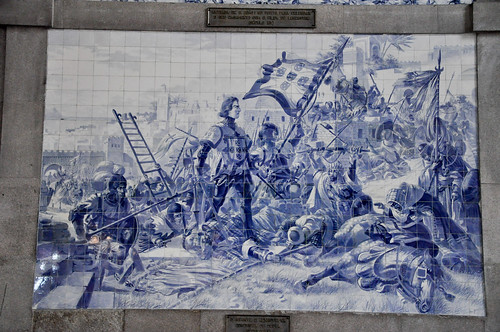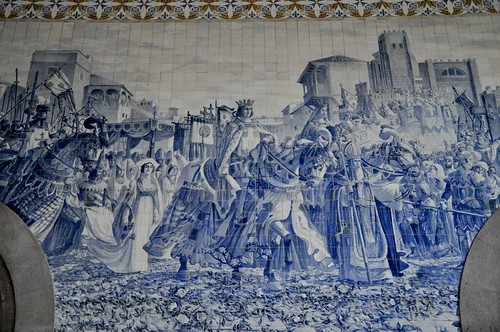Deixemos os livros de história para trás, aqui ela ganha vida no grande conjunto de azulejos de Jorge Colaço que estão no átrio de acesso ás linhas dos comboios. É talvez o melhor cartão de boas vindas ao centro da cidade para quem viaja por este meio de transporte.
Let the history books behind you, here it comes alive on the big set of tiles by Jorge Colaço that are in the lobby that gives access to the railways. It is perhaps the best welcome of the city center for those traveling by this transportation mode.
Let the history books behind you, here it comes alive on the big set of tiles by Jorge Colaço that are in the lobby that gives access to the railways. It is perhaps the best welcome of the city center for those traveling by this transportation mode.
Construída em 1896, alguns anos depois da Campanhã funciona como linha urbana e para ligações regionais. Vi no Wikipedia que foi considera pela Travel+Leisure como uma das estações mais bonitas do mundo. Link do artigo. Sem dúvida que os azulejos são a sua principal atracção retratando importantes momentos da história de Portugal como por exemplo a Conquista de Ceuta.
Built in 1896, some years after the Campanhã it Works as a urban line and rfor egional connections. I saw on Wikipedia that was considered by Travel + Leisure as one of the world's most beautiful seasons. Link to article. No doubt that the tiles are the main attraction depicting important moments in the history of Portugal such as the Conquest of Ceuta.
>>> Infante D. Henrique na Conquista de Ceuta
>>> Prince Henry in the Ceuta Conquest
>>> Visita ao Porto do Rei D. João I e D. Filipa de Lencastre
>>> King John I and Phillippa of Lancaster visiting Porto
>>> Egas Moniz (o Aio) apresenta-se com a familia ao Rei de Leão.
>>> Egas Moniz presents together with his family to the King of León
Mais
posts/More posts:









Sem comentários:
Enviar um comentário